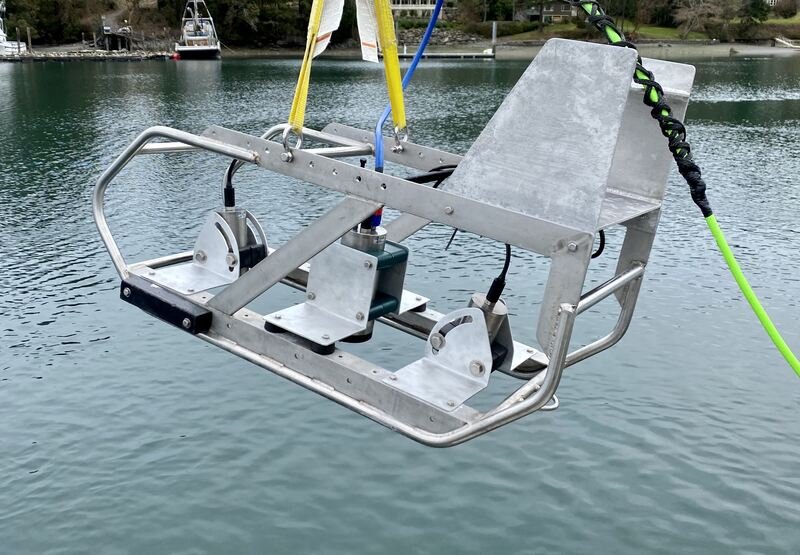Building vs. Buying: The Smart Choice for Subsea Camera Systems
The decision to purchase versus build is a classic dilemma faced by many organizations, particularly in specialized fields such as scientific research. For those engaged in underwater studies, the question often arises: should we buy a subsea camera system, or attempt to build one ourselves? While the allure of creating a custom solution may seem attractive, the realities of cost, time, and expertise frequently reveal that purchasing a commercial system is the superior choice. This article explains why buying a subsea camera system from a reputable ocean tech company like SubC Imaging is far more advantageous than building one in-house.
Subsea Camera System Cost Considerations
At first glance, the material costs associated with building a subsea camera system might appear to be significantly lower than purchasing a commercial product. Researchers often look at the price of individual components and assume they can assemble a functional system at a fraction of the cost of an offtheshelf solution. However, this calculation overlooks several critical factors that can drastically alter the financial equation.
Hidden Human Resource Costs
One of the most significant hidden costs in the build versus buy equation is human resources. Developing a subsea camera system requires a considerable investment of time and expertise from highly skilled personnel. This includes:
Engineering Team: Designing, developing, and testing the camera system.
Interns and Junior Staff: Assisting with assembly and basic troubleshooting.
Senior Researchers: Overseeing the project and ensuring scientific rigor.
The cumulative cost of these human resources can quickly surpass the initial savings on materials. Paying for engineering hours, managing project timelines, and dealing with potential turnover or reallocation of staff can add substantial expenses. In contrast, purchasing a commercial system comes with the assurance that these developmental stages have already been accounted for and perfected by the manufacturer.
Ongoing Maintenance and Support Considerations
When building an inhouse system, organizations must also consider the longterm maintenance and support required to keep the system operational. Commercial subsea camera systems, such as those offered by SubC Imaging, include comprehensive support packages that cover:
Technical Support: Access to experts who can provide immediate assistance with any issues that arise.
Documentation: Detailed user manuals and troubleshooting guides that simplify operation and maintenance.
Repairs: Professional repair services to handle any hardware failures or malfunctions.
Software Updates: Regular updates to ensure compatibility with new technologies and improvements in performance.
Without these support mechanisms, organizations that build their own systems must allocate additional resources to develop documentation, train staff on troubleshooting, and handle repairs internally. This not only adds to the overall cost but also increases the risk of system downtime and project delays.
Expertise and Experience
Building a subsea camera system requires specialized knowledge that many research institutions and universities may not possess. While they might have the resources to attempt such a project, the lack of specific experience in underwater camera technology can lead to significant challenges:
Component Availability: Specialty electronic components can be difficult to source, leading to delays and increased costs. Companies like SubC Imaging have established supply chains that ensure components are readily available.
Design Challenges: Developing a robust underwater camera system involves overcoming numerous design and functionality challenges. SubC Imaging's products have been tested in realworld environments, ensuring reliability and performance.
Troubleshooting: Unforeseen issues can arise during development, requiring extensive troubleshooting. With a commercial system, these problems have already been identified and resolved by the manufacturer.
Quality and Reliability
Commercial subsea camera systems are designed and manufactured to meet high standards of quality and reliability. SubC Imaging, for instance, has a proven track record of delivering cuttingedge technology that performs consistently in harsh underwater environments. When building a system inhouse, the quality and reliability of the end product can be compromised due to:
Limited Testing: Inhouse systems may not undergo the same rigorous testing protocols as commercial products.
Resource Constraints: Budget and time limitations can lead to compromises in design and construction.
Experience Gaps: Lack of experience in underwater technology can result in design flaws and functional limitations.
By purchasing a commercial system, organizations can be confident that they are investing in a product that has been refined and perfected through extensive research and development.
Should You Buy or Build Your Camera System?
Take Our 1-minute Assessment to Find Out
Prioritizing Research, Not Technology Development
For many research institutions and universities, the primary mission is to conduct scientific research, not to develop technology. Building a subsea camera system inhouse diverts valuable time and resources away from core research activities. By purchasing a commercial system, organizations can:
Accelerate Research: With a readytouse camera system, researchers can begin their studies immediately without the delays associated with development and testing.
Reduce Risk: Commercial systems come with warranties and support, reducing the risk of project delays and budget overruns.
Enhance Capabilities: SubC Imaging's advanced features and functionalities can enhance the quality and scope of research projects.
Case Studies: Camera System Success with SubC Imaging
Several research institutions and organizations have relied on SubC Imaging camera systems, with remarkable results. Here are a few examples:
Deep-Sea Discovery and Climate Change
Researchers using SubC Imaging's equipment in deep-sea exploration were able to gather valuable data on climate change. The reliability and performance of SubC’s systems enabled more accurate and comprehensive studies in harsh underwater environments.
Greenland Shark Research
The study of Greenland sharks benefited significantly from using SubC Imaging’s subsea cameras. The high-quality footage and dependable operation of the cameras provided researchers with crucial insights into the behavior and habitat of these elusive creatures.
Whale Bone Study in Barkley Canyon
SubC Imaging’s observatory camera system played a vital role in the ongoing whale bone study in Barkley Canyon. The continuous, high-quality monitoring capabilities of SubC’s system enabled researchers to gather important data on marine life interactions with whale bones.
Holyrood Subsea Observatory
The Holyrood Subsea Observatory project used a SubC Imaging’s camera system to obtain the first underwater visual data from the site. The robust and reliable technology provided by SubC Imaging ensured consistent data collection, aiding researchers in their environmental monitoring efforts.
Conclusion
While the idea of building a subsea camera system may initially seem cost-effective and appealing, the realities of development, maintenance, and support reveal a different picture. The hidden costs of human resources, the challenges of obtaining specialized components, and the risks associated with design and functionality make building an in-house system a complex and often more expensive endeavor.
Purchasing a commercial subsea camera system from a reputable ocean tech company like SubC Imaging offers numerous advantages. These include access to expert support, reliable documentation, and high-quality, tested products that can withstand the rigors of underwater research. By investing in a commercial system, organizations can focus on their core competencies, accelerate their research, and achieve better outcomes.
In the end, the decision to buy rather than build is not just a matter of cost, but of strategic resource allocation. By choosing to purchase a subsea camera system, research institutions can ensure they are equipped with the best tools available, allowing them to conduct their work efficiently and effectively, without the added burden of developing and maintaining complex technology.












